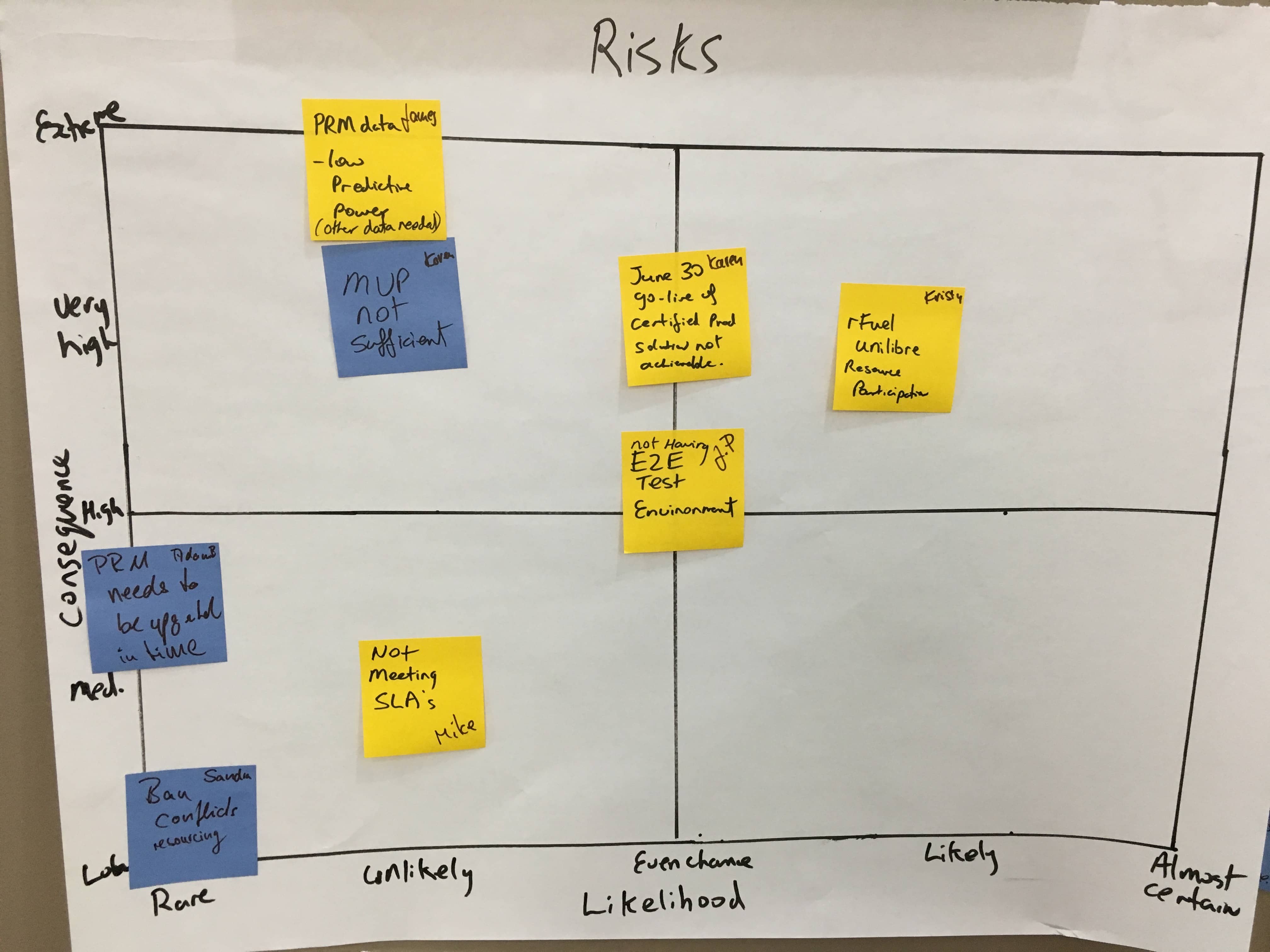Risk Management
Identify potential problems that might occur during the course of your project and identify ways of avoiding them. Risks, which are occurring, will become issues.
目录
What is it?
To help the team identifying and evaluating risks (potential issues) and finding actions to avoid or minimise their impact on time, cost and or scope.
Why use it?
It will reduce the likelihood of the event to happen and reduce the magnitude of its impact
How to do it?
- The best approach to identifying risks is to arrange a workshop where the participants will brainstorm on potential, future risks
- First, risks needs to be identified which can have an impact to the project or outcome
- Some example of risks are:
- Inadequate delivery capability (due to team experience, lack of inconsistent methodology or process)
- Ineffective delivery (due to unclear roles & responsibilities, issues not being escalated)
- Inadequate management of stakeholders (due to expectations not being identified)
- Unclear project or activity value (due to poor evaluation of business ownership of benefits)
- Resource limitations (due to skill shortages)
- Failure to recognise & manage dependencies (due to lack of communication)
- Failure of external vendors / suppliers (due to poor engagement)
- Next, the risks need to be rated based on likelihood and impact at the present time
- Once the risks have been rated, mitigation strategies need to identified.
- Last but not least, the risks will be displayed in the team area, where the Daily Standup’s happen. That way, the risks can be reviewed on a daily basis and dealt with, if / once they occur.

Further Information
- Agile Risk Management presentation from Greg Smith
- A simple approach for Risk Management in Scrum by Sebastian Botiș
- The Disciplined Agile (DA) Framework
